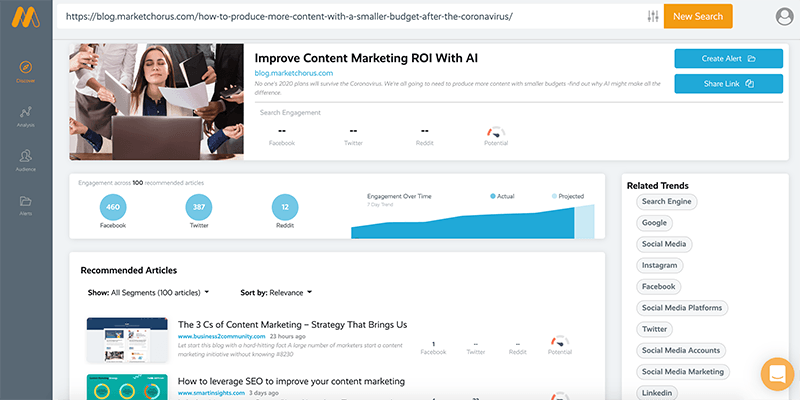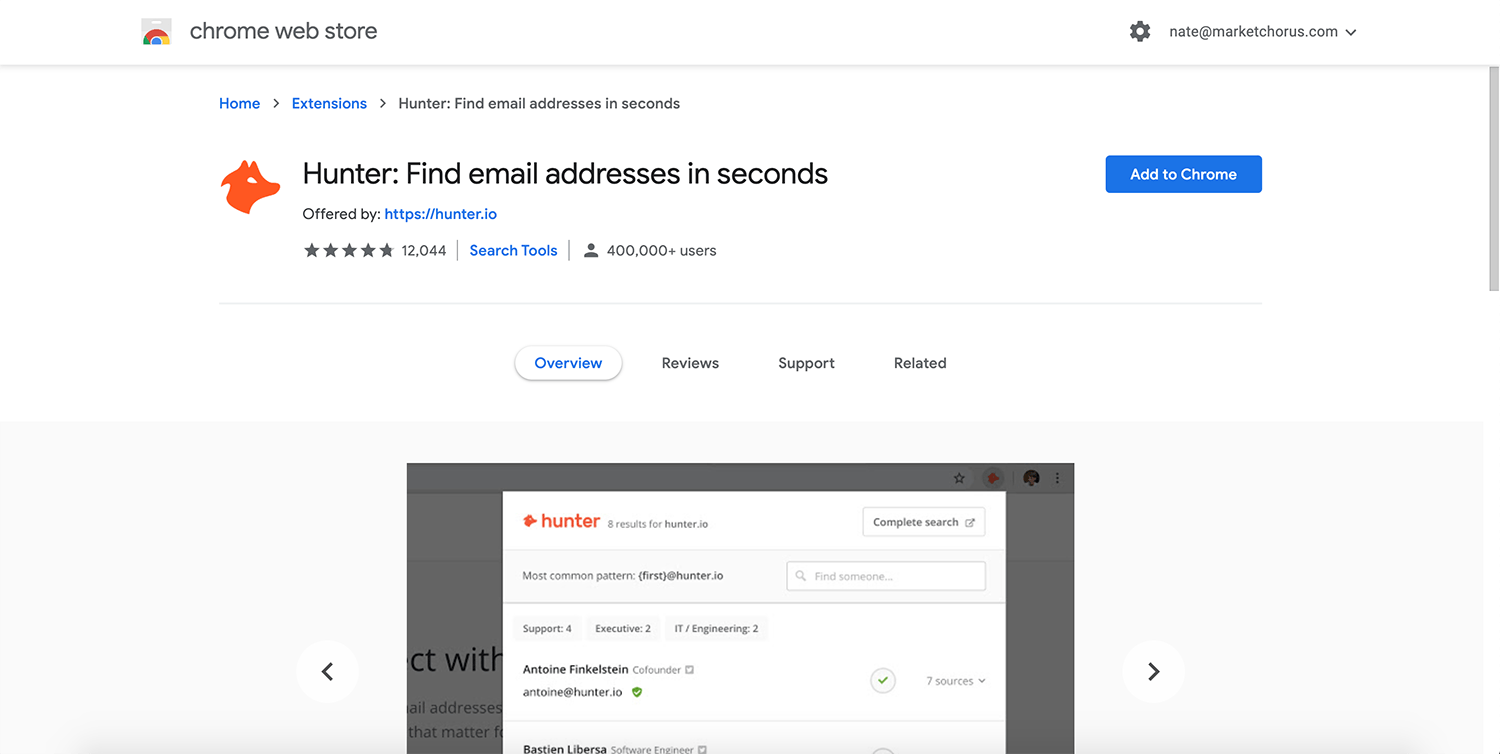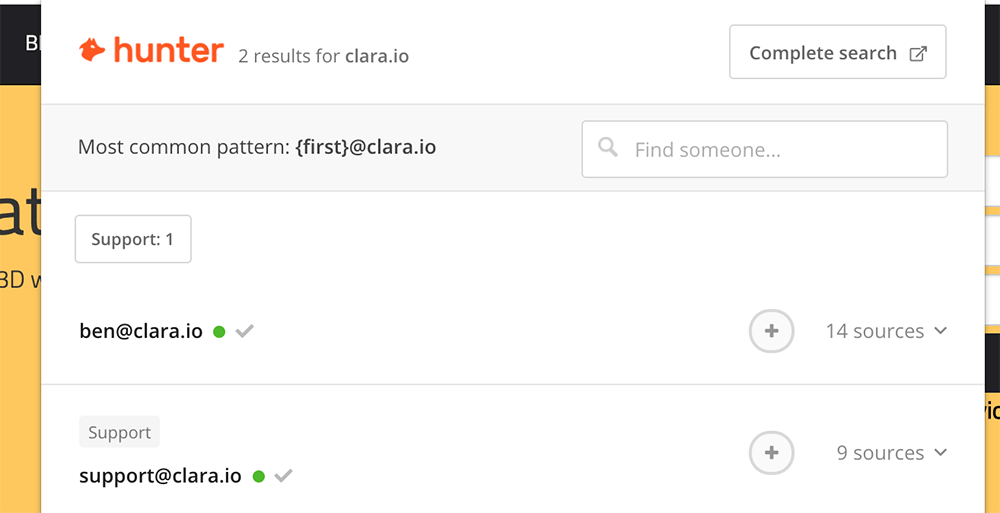Sales development is a Sisyphean task, rolling the giant rock up-hill each day to have it knocked back down again before the next. The demand for leads never ends, and usually, it grows. There are rarely ever enough leads and certainly never too many.
No matter how many leads come in through your company’s marketing funnel, there will always be room for more, which means that you, as a salesperson, are going to have to do some amount of prospecting for new leads.
Most of the easy, and obvious, options are already stalked by salespeople so aggressively that your quarry spooks easily and won’t tolerate any intrusion. LinkedIn is the obvious example of this…warm leads everywhere that you struggle to reach because they treat salespeople like invaders.
The direct approach of simply messaging people based on their job titles doesn’t cut it anymore. You need to catch them at just the right time, when they’re looking for specific information that you can provide, or anything you say to them will probably fall on deaf ears.
Which begs the question: How can you discover people actively looking for information on topics relevant to your products or services?
The answer isn’t altogether surprising. You can easily find good quality prospects discussing topics of interest, or engaging with relevant content, on social media.
Twitter, in particular, is a fairly open platform and it’s possible to simply download a list of all the users who’ve liked, shared, or commented on posts on relevant topics…with the right tool.

MarketChorus Resonance is a content intelligence platform that enables you to search world and industry news for content that’s relevant to your prospects and then extract a list of everyone engaging with that content on Twitter.
A few of these accounts will be publications and bots, but you’ll be surprised just how many of these users are real, human readers that are deeply interested in gaining information that you can provide to them. And that creates the window of opportunity you need to start building a relationship that grows into business for your company.
Let’s look at a real example of how to use social media for prospecting leads…
The Right Content Yields The Right Prospects
We believe that, in a way, you are what you read. At least, it’s safe to say that you’re at least interested in what you read. And that interest suggests that you have some motivation that drives you to spend time researching. That, in itself, demonstrates desire that we can leverage to create an opportunity to open a sales dialogue.
The first step in prospecting with social media is to identify content (articles, videos, etc) that your target audience is likely to find if they’re researching a topic relevant to your brand.
Here are two theoretical examples:
First, if you’re selling CRM technology, your target audience will be consuming content about marketing automation, lead generation, sales pipelines, etc…
Second, if you’re selling edge computing hardware for processing surveillance video, the prospects you’re trying to reach will be educating themselves about hyper-specific topics like cost of bandwidth, edge processing, and hyperconvergence.
In either case, the articles people will be reading to educate themselves on these topics are technical and specific. They aren’t likely to be read by laypeople -or even your prospects unless they have a pressing need.
Content is only of interest to people who can benefit from the knowledge it conveys.
Which makes business-related content, and especially industry news, a lens through which you can target prospects with laser precision.

The Right Tool For The Job
Once you have an example of a piece of content that your ideal prospect would love to read, the next step is to task MarketChorus Resonance with finding any recently published related content.
Any single article will have a fairly limited audience…but a collection of hundreds of similar articles represents a much broader audience for you to conquest.
The process is very simple. If you haven’t already, sign up for a free subscription to MarketChorus Resonance to get started.
Next, paste the URL of an article or video that your target audience would read into the search bar at the top of the Resonance dashboard. If your company produces content relevant to the persona you’re trying to reach, you can use one of your own blog posts for this purpose.

The results from your search will appear below a synopsis of the article you searched and the related social media metrics, in the “Recommended Articles” section. Browse these articles to make sure they’re a good fit for your intended audience.
If not, fine tune the results with Advanced Search, or by clicking on any of the Related Trends (to prioritize any results containing those keywords).
When you are satisfied, the next step is to move over to the Analysis page where you can preview and extract the list of Twitter accounts engaging with the content you’ve found.
You Want To Know, Who Wants To Know
Browse to the Analysis page within the Resonance dashboard and you’ll see the same summary at the top of the page, and if you scroll down a bit, you’ll see the Audience section which contains your prospects.
This section is divided into 2 parts, Engaged Audience and Influencers, which are simple to explain.
The engaged audience contains every Twitter account which liked, commented on, or shared posts containing the URLs of any of the articles found in your search.
Influencers are the accounts whose posts drove the highest number of actions from the engaged audience. In a literal sense, they are the people that most influenced the discussion around this particular set of articles related to your topic of interest.
Both of these lists are quite useful in different ways…
After eliminating a few bots, publications, and other irrelevant accounts from the engaged audience, you’ll be left with a list of potential prospects.
The influencers can be seen as a marketing opportunity, but you may also be able to find additional prospects by looking at their Twitter followers.
First preview the engaged audience to make sure that you’ve gathered a collection of the right people. If not satisfied, refine your search or try a different article. If the results are promising, click the Export button to download a .CSV file with their Twitter data.
There are a number of things you can do with this data, including run Twitter ads to them, but from a sales perspective, you really want to import this data into your CRM. Since not everyone actually provides their real, personal information to Twitter, your mileage may vary if you’re attempting to do this manually.
Gather Emails With Hunter.io
Identifying prospects is a big part of the puzzle, but this isn’t the end, it’s only the beginning of the sales process. To go much further, you’ll need to be able to contact your prospects through other channels than Twitter.
All the best ways to reach your prospects digitally require their email address, either for sending emails, or matching to social media profiles (Facebook, LinkedIn, etc). And considering that many of the accounts you’ll discover won’t be individuals (they’ll be brand accounts), you’ll most likely want to extract multiple contacts for each brand you discover.
Fortunately, there’s a great tool built for just this kind of situation. It’s called Hunter.io, and it turns the slow, mind numbing process of looking up contact information quick and painless.
Set up a free account and install the Hunter browser extension to get started.

Hunter.io works as both a web application and a browser extension to collect email addresses from company websites. In the web app, just search a domain to reveal known email addresses associated with that domain. Or, visit the website and click the extension in your toolbar to achieve the same result.
This wonderful little time saver works by searching Hunter.io’s database of company domains and email accounts to determine the naming convention / email address pattern used by the company you’re investigating.
Typically companies will stick to a simple convention like first-initial-last-name, like “nbinford” in my case, or first-name-dot-last-name, like “nathan.binford” -which is increasingly popular. Small companies may just stick to their employees’ first names. It varies company to company, which is why Hunter.io is such a valuable asset.
To bring all of this into focus together, imagine a scenario where you’re using MarketChorus Resonance to discover great, relevant content and extract the audience that’s engaging with it on social media.

Now that you have a list of interested parties, you’ll need to research and vet them before you’ve actually done any prospecting. This is extremely time consuming, as is finding their email address so you can reach out to them.
Hunter.io makes this easy…

Discover and view Twitter profiles in MarketChorus and then browse to their website (typically from the website link in their bio) where you can scrape any known names, emails, and job titles with the click of a button.
Rolling up your sleeves and getting to work
There you have it. A simple, reliable way to discover who’s talking about news that’s only important to the kind of people you’re trying to reach, and a quick and painless way to extract their contact information.
Using MarketChorus in combination with tools like Hunter.io enables you to tap into sales opportunities that other, less tech-savvy sales people might overlook. And once you have a rhythm, discovering new prospects and extracting their contact information can be done in a few minutes a day.
There are no easy approaches to sales. There’s always a bit of effort involved when you’re trying to drum up business from scratch. It takes creativity and luck to discover prospects when they’re not only ready to buy, but ready to listen.
Looking through the lens of social media you’re able to understand what interests and motivates your audience in the moment. Use that intelligence to craft the perfect sales pitch and then take it to the prospects you’ve uncovered with your research.
You may still need to roll up your sleeves and do the hard work, but you can cut a lot of corners by automating your research with AI-based tools.
To put this strategy into action for yourself, sign up for a free MarketChorus Resonance account and start making social media prospecting a part of your sales process today. Or, reach out to us for information about our AI-driven lead generation service.



